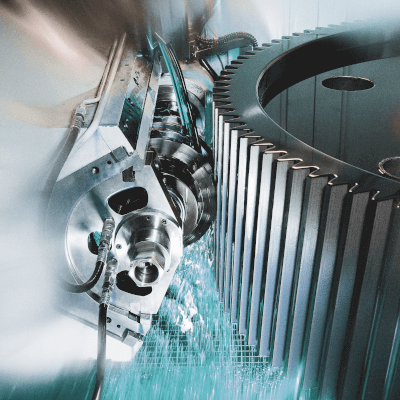What Is Gear Cutting?
 Gear cutting is a machining process that shapes the teeth of a gear. It typically involves a rotating blade moving up and down on a fixed workpiece. This process is done using a gear-cutting machine, often referred to as a hobbing machine.
Gear cutting is a machining process that shapes the teeth of a gear. It typically involves a rotating blade moving up and down on a fixed workpiece. This process is done using a gear-cutting machine, often referred to as a hobbing machine.
High precision in gear cutting is crucial to prevent excessive load and potential damage during gear meshing.
Uses of Gear Cutting
Gear cutting is essential for manufacturing various gear types, such as spur gears, bevel gears, and helical gears. The specific shape of the gear teeth is tailored to the machine’s requirements. Gears produced are integral in diverse fields, including automotive, aerospace, industrial machinery, agriculture, and precision instruments like watches.
Types of Gear Cutting
Gear cutting techniques can be categorized into two main methods.
1. Generating Method
This method gradually shapes the entire gear, offering efficient, uniform precision, making it ideal for mass production. Although it requires specialized machinery, resulting in higher initial costs, it achieves high precision across the entire gear. The hobbing process is an example of this method.
2. Forming Method
This method forms each gear tooth individually. It requires precise part positioning, affecting the overall machining accuracy. While less efficient than the generating method, it has the advantage of lower equipment and production costs, as it can be done using general-purpose NC machine tools. Milling machines are commonly used in this method.
Choosing the right gear cutting technique depends on a balance between accuracy and cost, tailored to the gear’s intended application.